|
ID |
Nickname |
Country / City |
Languages |
Taxonomies |
Comment |
Project / Group |
Map |

|
43689
|
|
ʻAmelika Hui Pū ʻIa
Honolulu
|
|
|
HK – Shaka is not Hawaiian. Rather its a term for hang loose used by surfers. The term has become more thoough a greeting and farwell sign here in Hawaiʻi. We dont say Shaka but the gestures is used more. Thats just what we call um. It has become our local culture to do it. In this case Hang Loose referese to the Tea to be very calming and chill. This is a product you can find at Foodland.
|
Multilingual Hawaiʻi
|
|

|
43434
|
|
United States
Honolulu
|
|
|
(HC)
Domain: Long's Drugs Greeting Card Department
Purpose: Pidgin is used as an expression of congratulating any recipient of the card.
Audience: Customers looking to buy a local-themed greeting card
Print: 3x5" greeting card
Message: "Chee hoo" is an expression of congratulations in HWC.
|
Multilingual Hawaiʻi
|
|

|
43690
|
|
ʻAmelika Hui Pū ʻIa
Honolulu
|
|
|
HK – Happy Wahine is Hawaiian and English with Wahine being woman. This is a spa unit that is probably target audience being Woman. This is a unit in the International Market Place.
|
Multilingual Hawaiʻi
|
|

|
43435
|
|
United States
Honolulu
|
|
|
(HC)
Domain: Drive through parking lot
Purpose: Denoting the owner of this vehicle to be of an Uncle figure.
Audience: All audiences, seen as a novelty sticker
Format: Bumper sticker on the back of a pickup truck
Message: "Unko status," known in Hawaii, Uncle, or "Unko" is usually a colloquial term for an adult male in Hawaii, as a term of endearment.
|
Multilingual Hawaiʻi
|
|
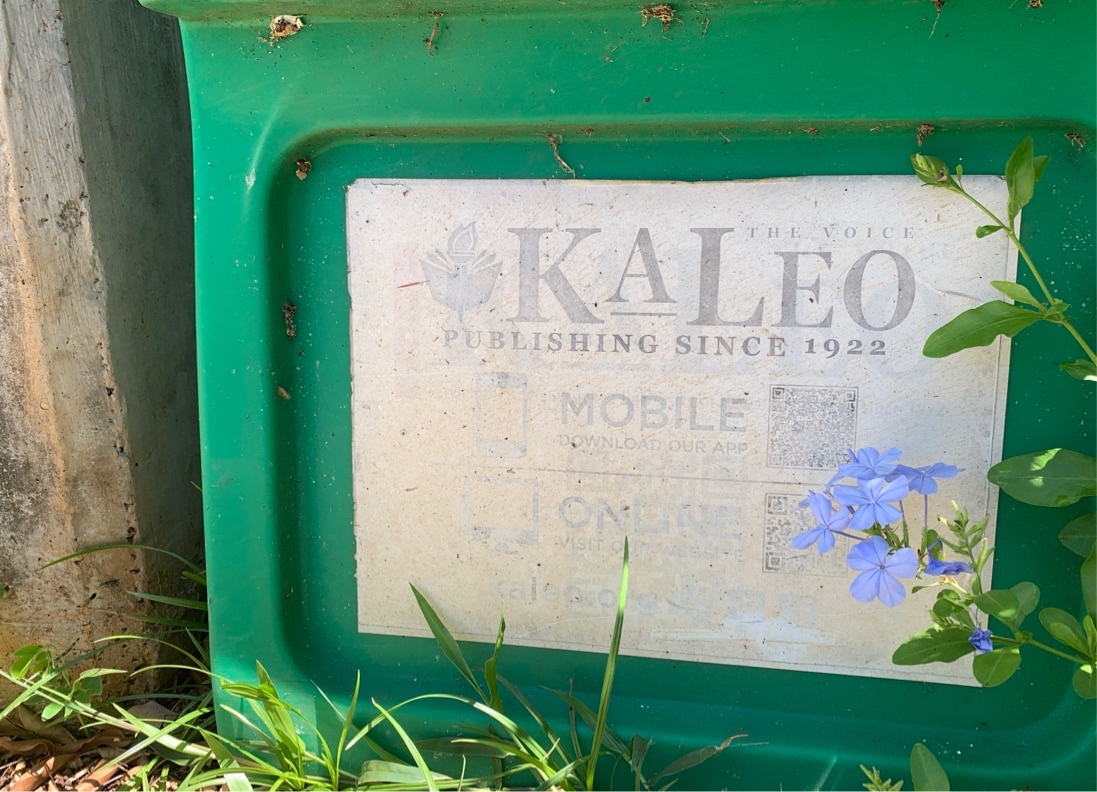
|
43691
|
|
ʻAmelika Hui Pū ʻIa
Honolulu
|
|
|
HK – Ka Leo is Hawaiian for “The Voice”. It is our Schools paper here at University of Hawaiʻi at Mānoa . Here is a newpaper box that students can grab paper from on the way to and from Campus Center. This is ment for the students here in UH Mānoa but I think only a few students here know what Ka Leo means. I think a lot of people is just aware of it rather then the definition which is “The Voice” and it stands perfectly what a newspaper is.
|
Multilingual Hawaiʻi
|
|

|
43436
|
|
United States
Honolulu
|
|
|
(HC)
Domain: UH Manoa Campus
Purpose: Denoting a family event on Fridays for families to participate
Audience: Families with children
Print: Neon green flyer
Message: Announcement for a family activity night at UH Manoa
|
Multilingual Hawaiʻi
|
|
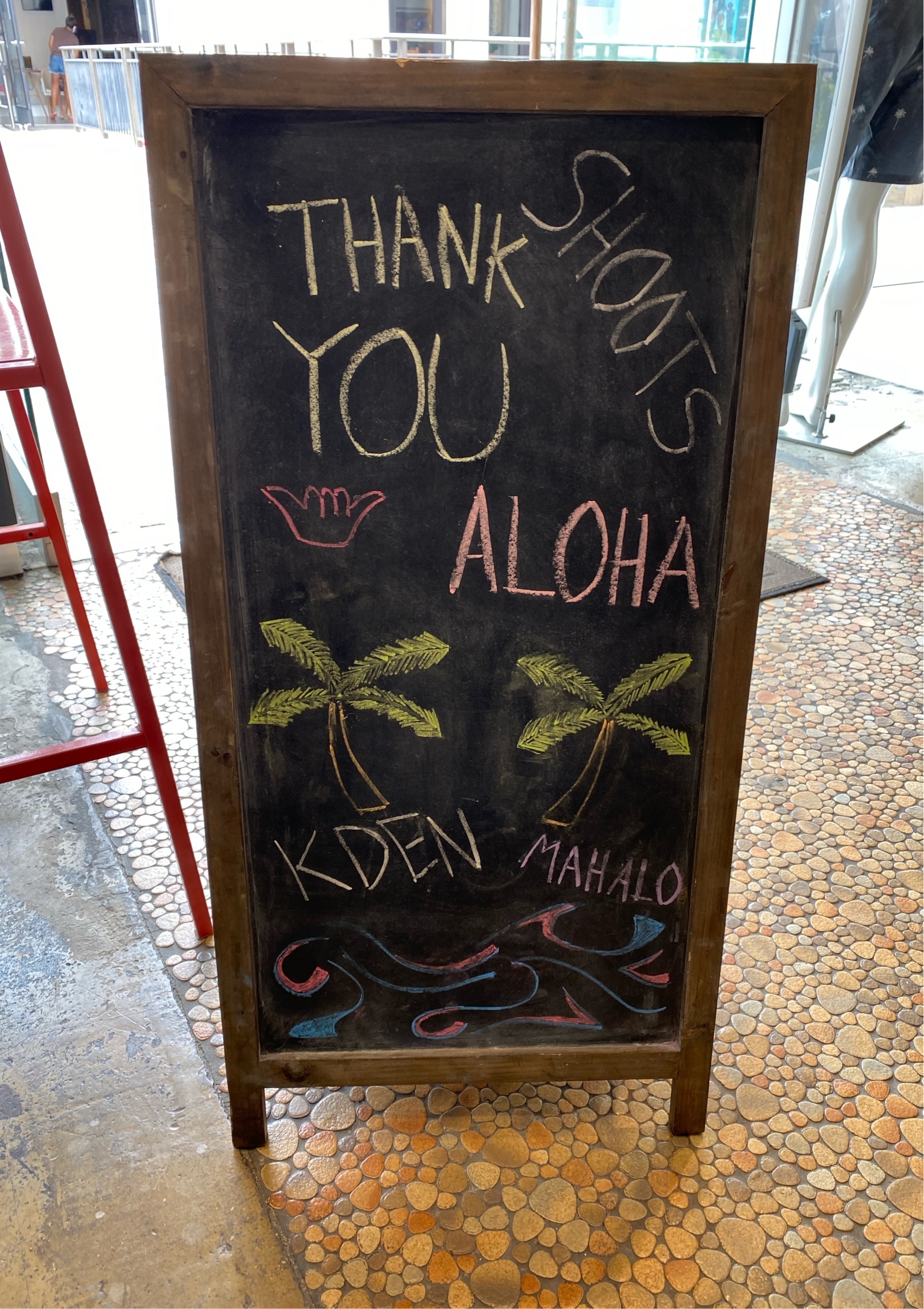
|
59564
|
|
United States
Honolulu
|
|
|
This is the exit sign for a popular local store that sells local shirts with Pidgin on it. The style of the store is a beach or surfer theme but any local can shop there. Because it’s in Ala Moana Shopping Center, it’s also a site for tourists.
|
Multilingual Hawaiʻi
|
|
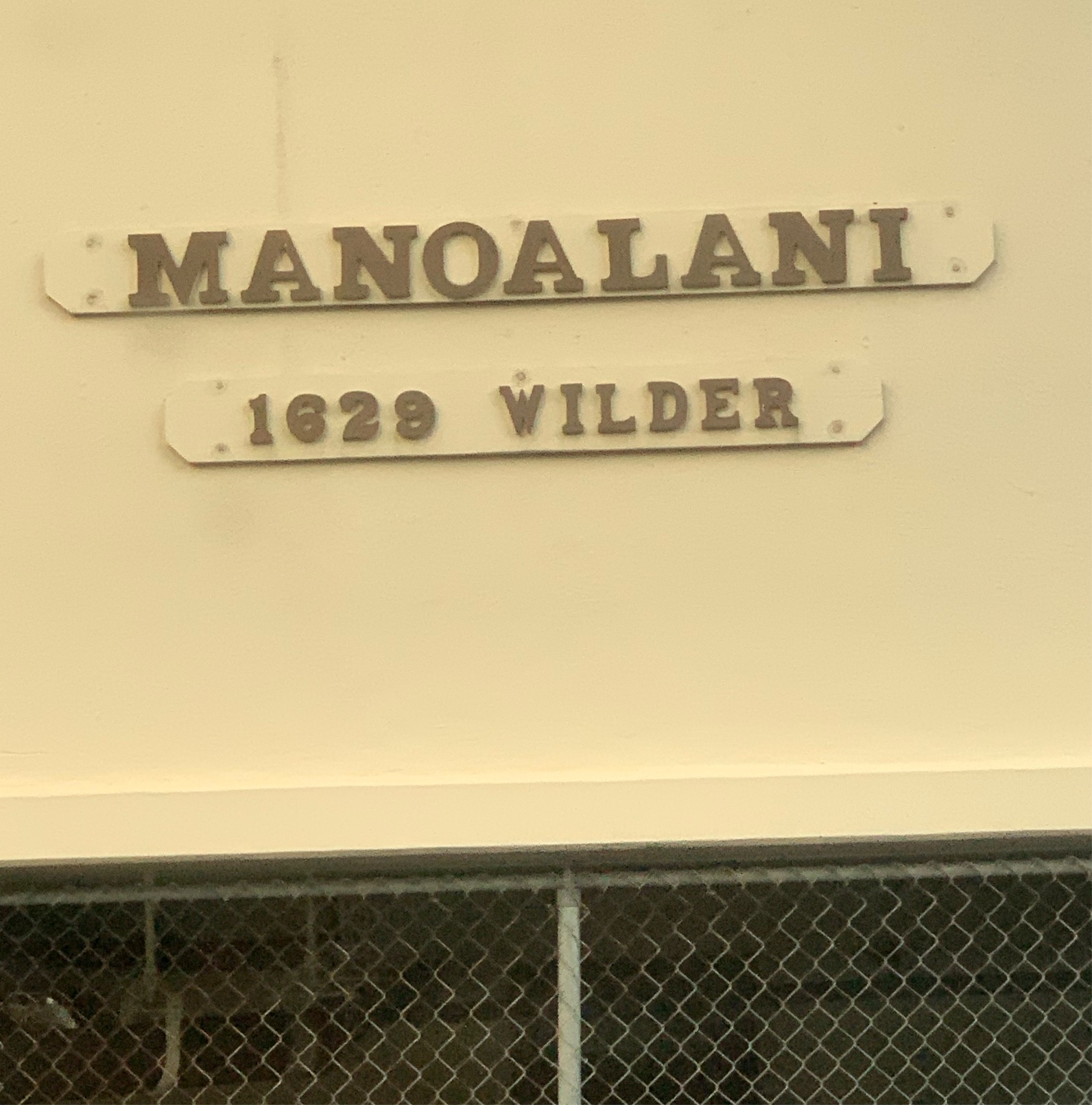
|
43437
|
|
United States
Honolulu
|
|
|
(HC)
Domain: Manoalani Apartments
Purpose: Place marker of a Hawaiian apartment complex
Audience: Passerby and Residents
Format: Wooden sign on Concrete wall
Message: "Manoalani" translates to: "Vast Heaven" and also describes the location of the apartment, being close in proximity to Manoa town.
|
Multilingual Hawaiʻi
|
|
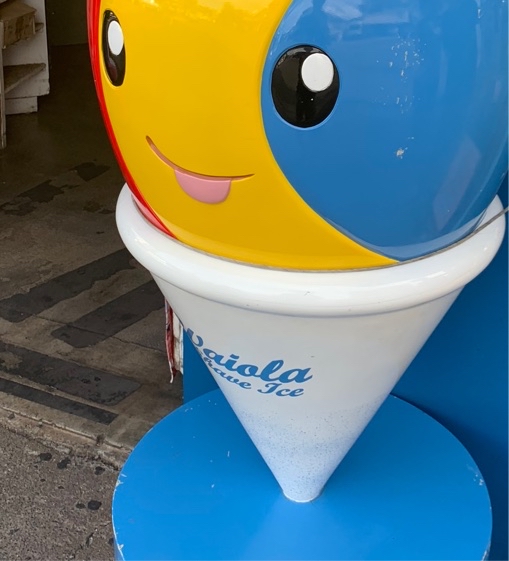
|
43438
|
|
United States
Honolulu
|
|
|
(HC)
Purpose: Statue of the mascot for Waiola Shave Ice, a popular dessert shop on Oahu.
Audience: Tourists for pictures, customers of the shop.
Format: ABS/Plaster statue of the shave ice mascot.
Message: "Shave ice" is derived from "Kakigori", a popular ice snack from Japan. After the plantation era, Hawaii had took substantial inspiration from the Kakigori into the creation of "Shave ice", essentially syrup poured over what is finely crushed, or "shavings" of ice.
|
Multilingual Hawaiʻi
|
|
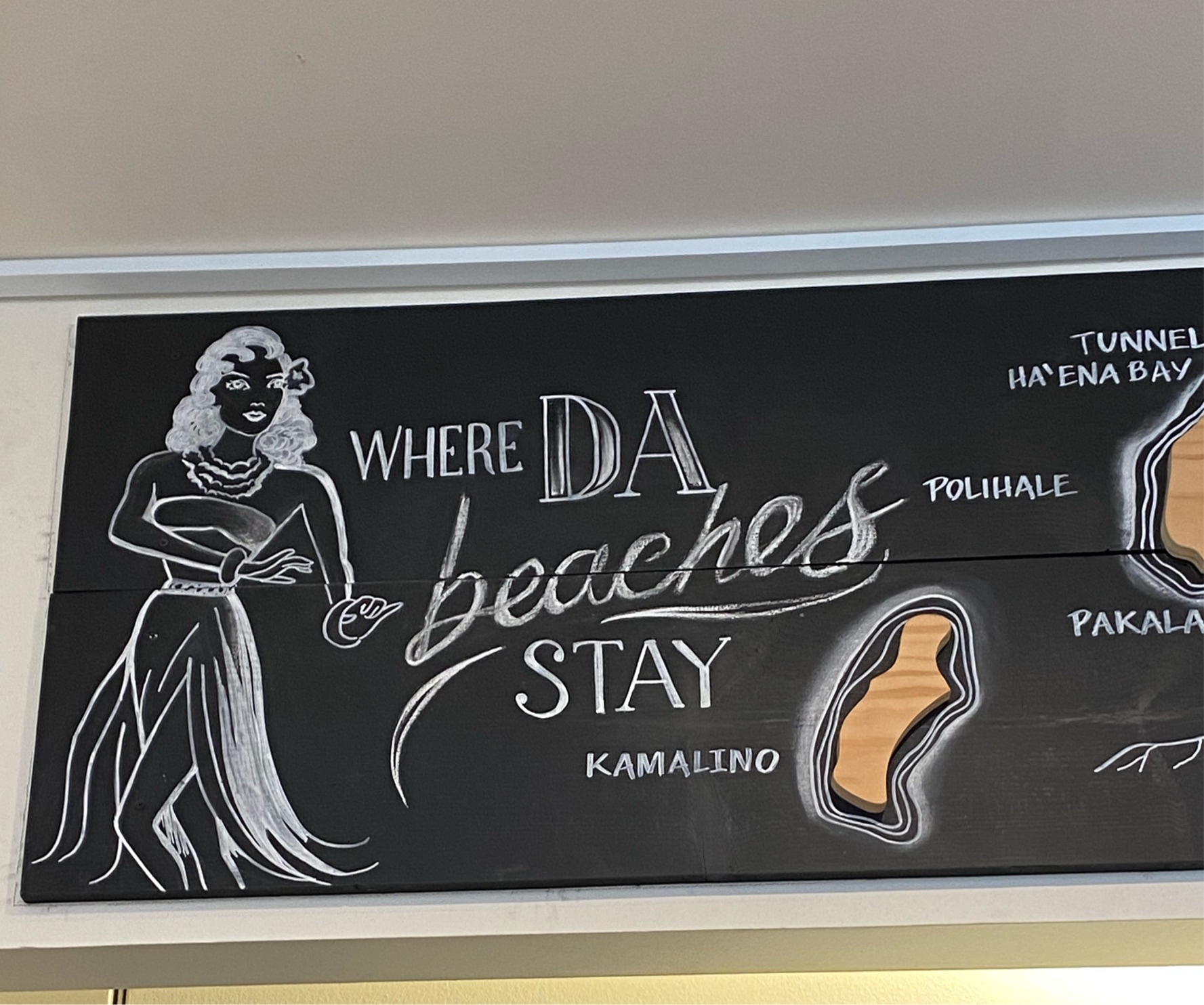
|
59566
|
|
United States
Honolulu
|
|
|
Here we see Pidgin being used in a sign in a retail clothing store to educate probably tourists about where the beaches are and probably some locals who are not aware of where all the beaches are in Hawaii. This is accompanied by a drawing of a hula dancer which I’m not sure what the associated of hula and beaches are. The design is also drawn with a blackboard and chalk looking design to reinforce the education purpose of the sign.
|
Multilingual Hawaiʻi
|
|
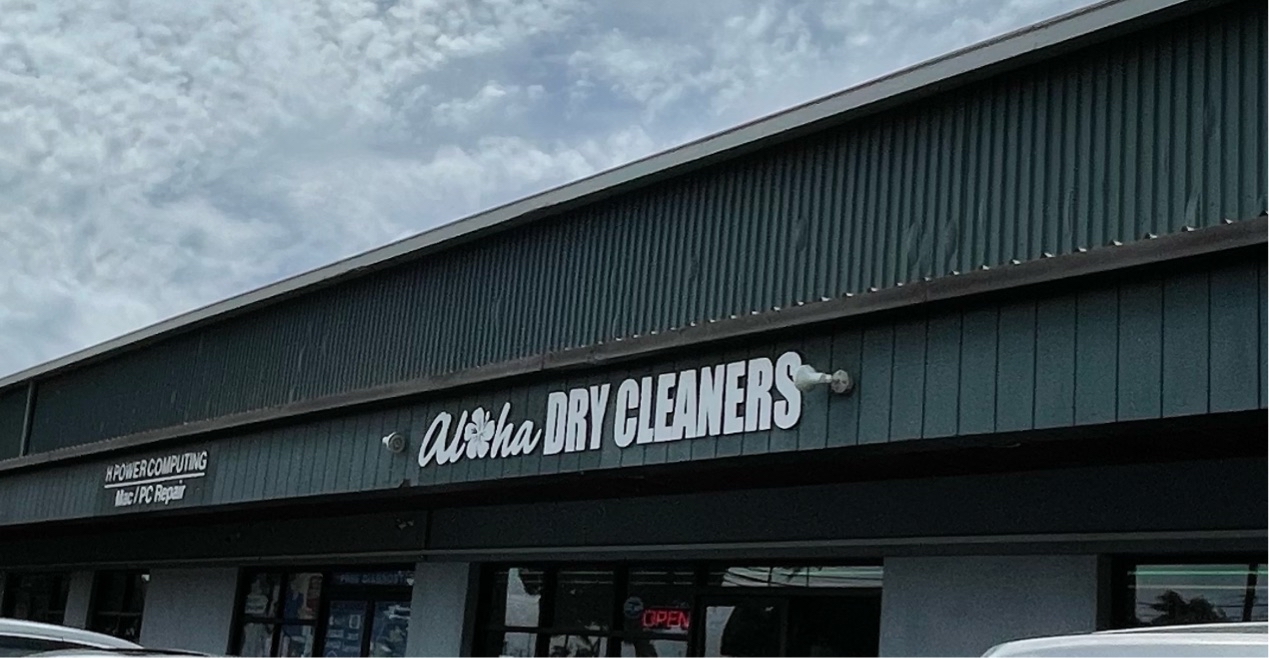
|
43951
|
|
United States
Honolulu
|
|
|
SU
- medium: The sign is printed on a building located at Ward Village.
- domain: The context of the sign is that it is a dry cleaners that also washes and folds your clothes for you, making it aloha fresh.
- audience: The sign is intended for people who are passing by the area. It is intended for nonlocals and locals.
- function: The sign is trying to inform people that there is a dry cleaners located there in Ward Village.
- language: The language that is dominant on this sign is English, “Dry Cleaners” with a little Hawaiian, “Aloha”.
The word “aloha” means “hello, goodbye, love” in Hawaiian.
|
Multilingual Hawaiʻi
|
|
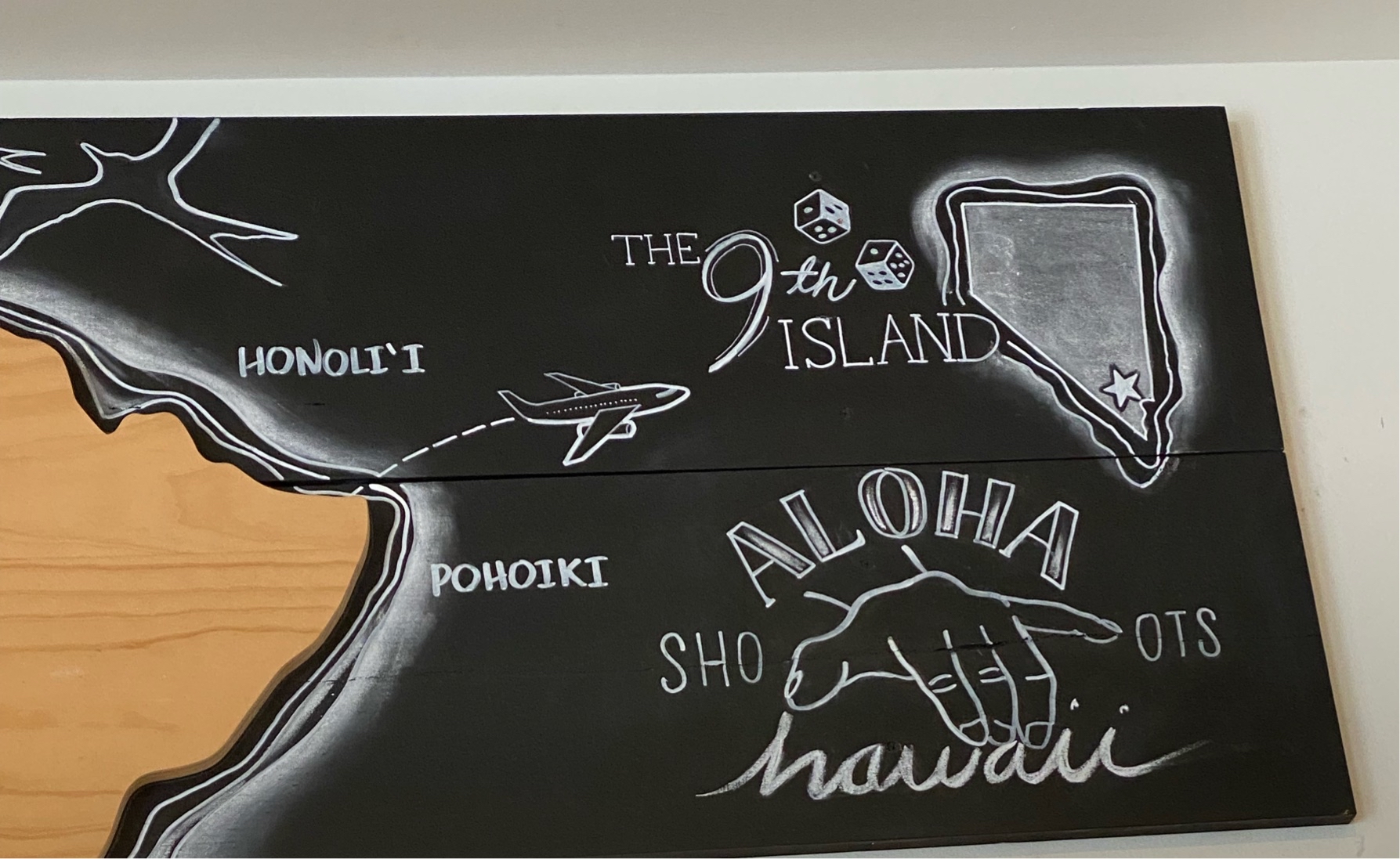
|
59567
|
|
United States
Honolulu
|
|
|
This s
|
Multilingual Hawaiʻi
|
|
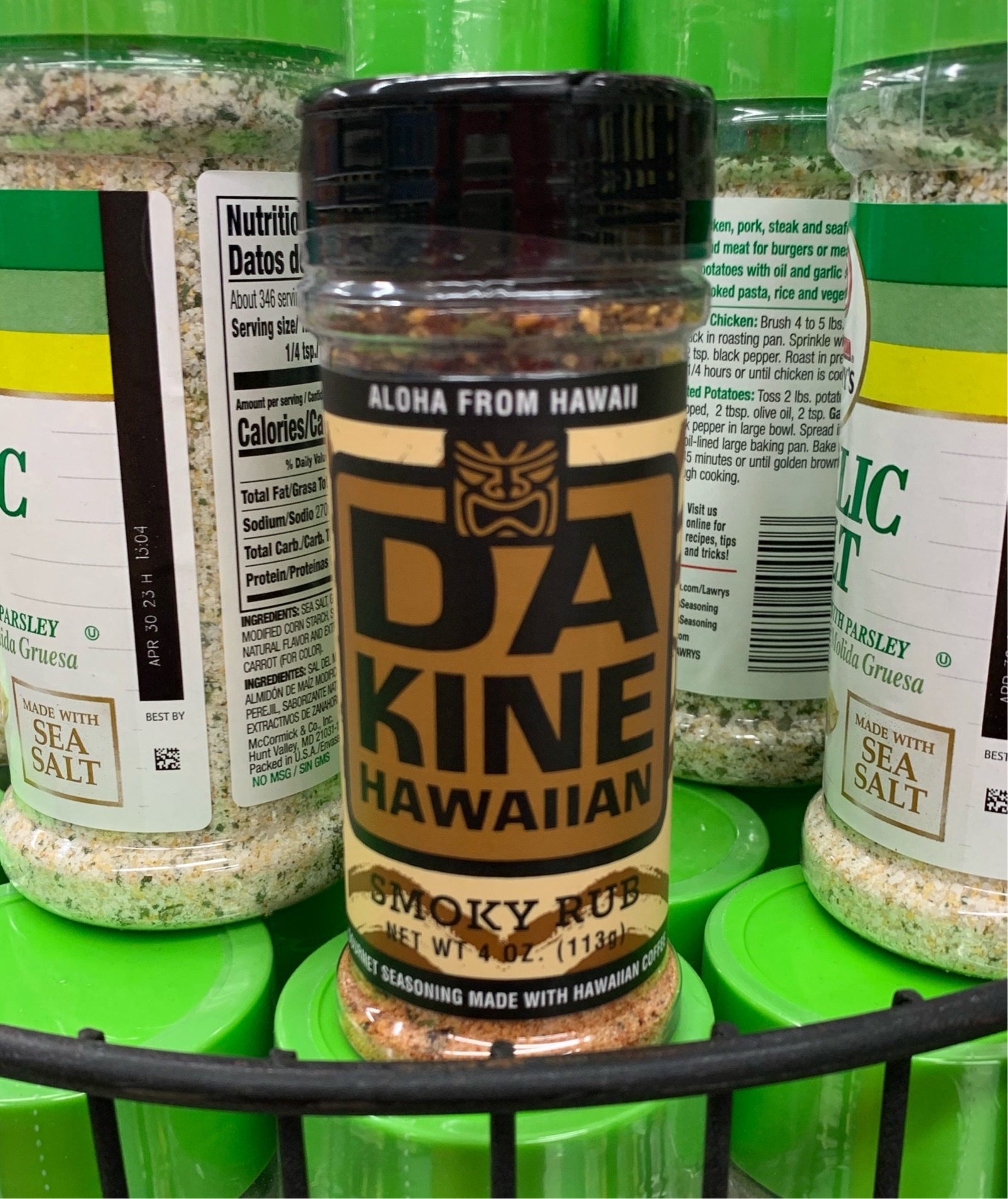
|
43952
|
|
United States
Honolulu
|
|
|
SU
- medium: The sign is printed on a bottle of seasoning.
- domain: The context of this sign is that it is a seasoning with smoky rub in it (smoked paprika).
- audience: This sign is intended for the public in general. Anyone who is in the store passing this seasoning or buying it. Intended for local and nonlocal.
- function: This sign is trying to tell you that it is made in Hawai’i as it says at the top “aloha from Hawai’i”.
- language: The language that is dominant on this sign is Pidgin or HWC with some Hawaiian and English.
The phrase “da kine” means “the kind” when it is roughly translated and it is similar to the Pidgin expression “any kine” which means “any kind”. It is usually used when you can’t put your finger on what you’re trying to say. For example, “Um…da kine, he went to the grocery store already.”, “She wen go mess up my da kine.”, “He’s so da kine.”
|
Multilingual Hawaiʻi
|
|

|
43953
|
|
United States
Honolulu
|
|
|
SU
- medium: The sign is printed on a light up sign above the restaurant.
- domain: The context of this sign is that Griddle N Grindz is a Korean BBQ restaurant that serves plate lunches.
- audience: This sign is intended for people who are passing through the area, for locals and nonlocals.
- function: The sign is trying to inform people about the restaurant as they pass by and catch their attention enough to make them want to try their food.
- language: The language that is dominant on this sign is Pidgin or HWC, “Grindz” with a little English, “Griddle”.
The word “grindz” is translated to “food” in Pidgin.
|
Multilingual Hawaiʻi
|
|
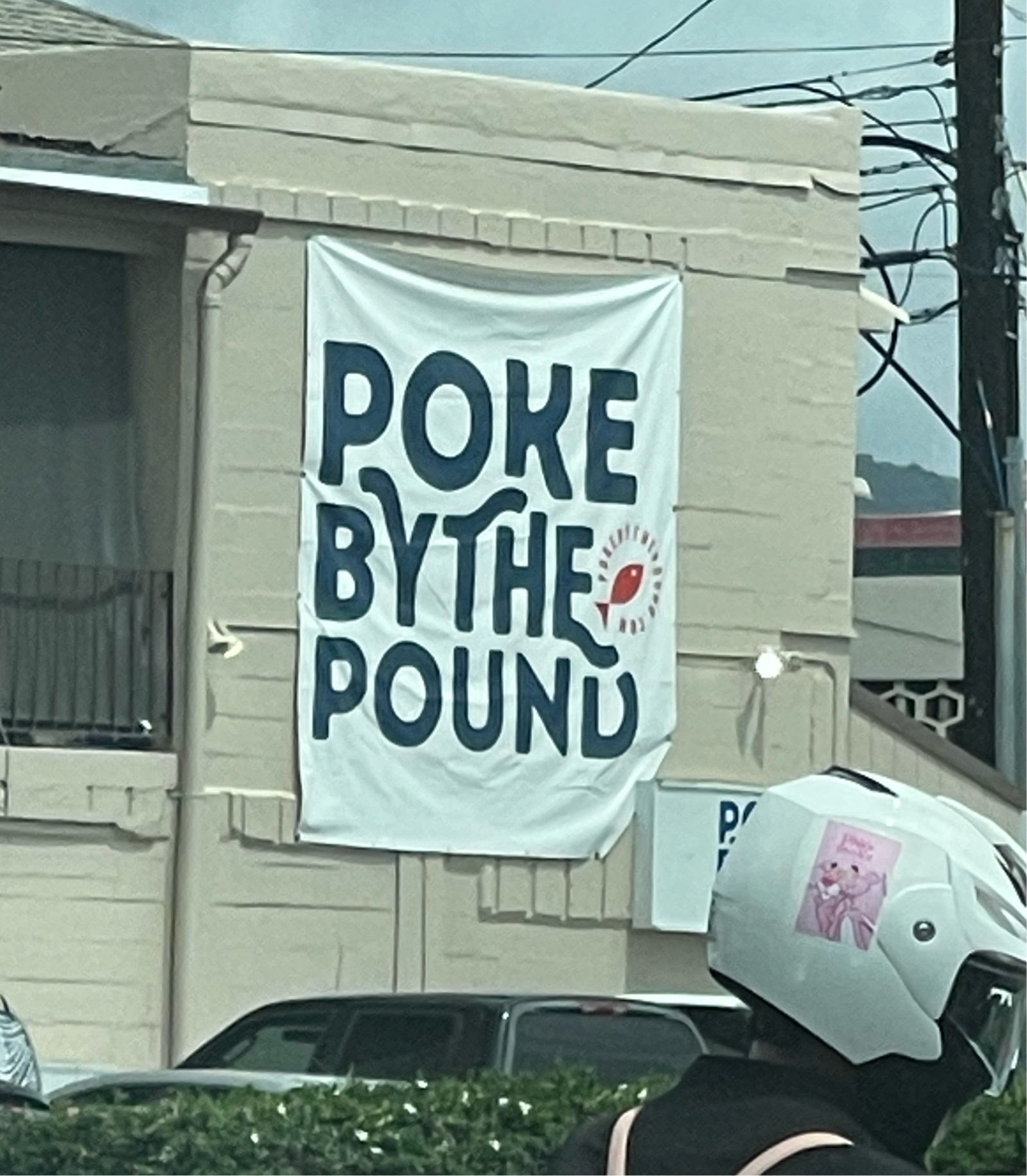
|
43954
|
|
United States
Honolulu
|
|
|
SU
- medium: The sign is printed on a piece of cloth on the front of a building.
- domain: The context of the sign is that Poke by the Pound is a fresh poke and seafood market.
- audience: This sign is intended for people who are passing by this place and might not see the smaller sign that is behind the girl’s helmet in this photo. This sign is intended for locals and nonlocals.
- function: The sign is trying to inform people about the seafood market and get them intrigued in trying the poke.
- language: The language that is dominant on this sign is English, “by the pound” with a little Pidgin, “poke”.
The word “poke” can be a Pidgin term that means to slice, or cut, wood or fish into crosswise pieces and is often used to describe sliced, or cubed, fish that is ready for consumption.
|
Multilingual Hawaiʻi
|
|
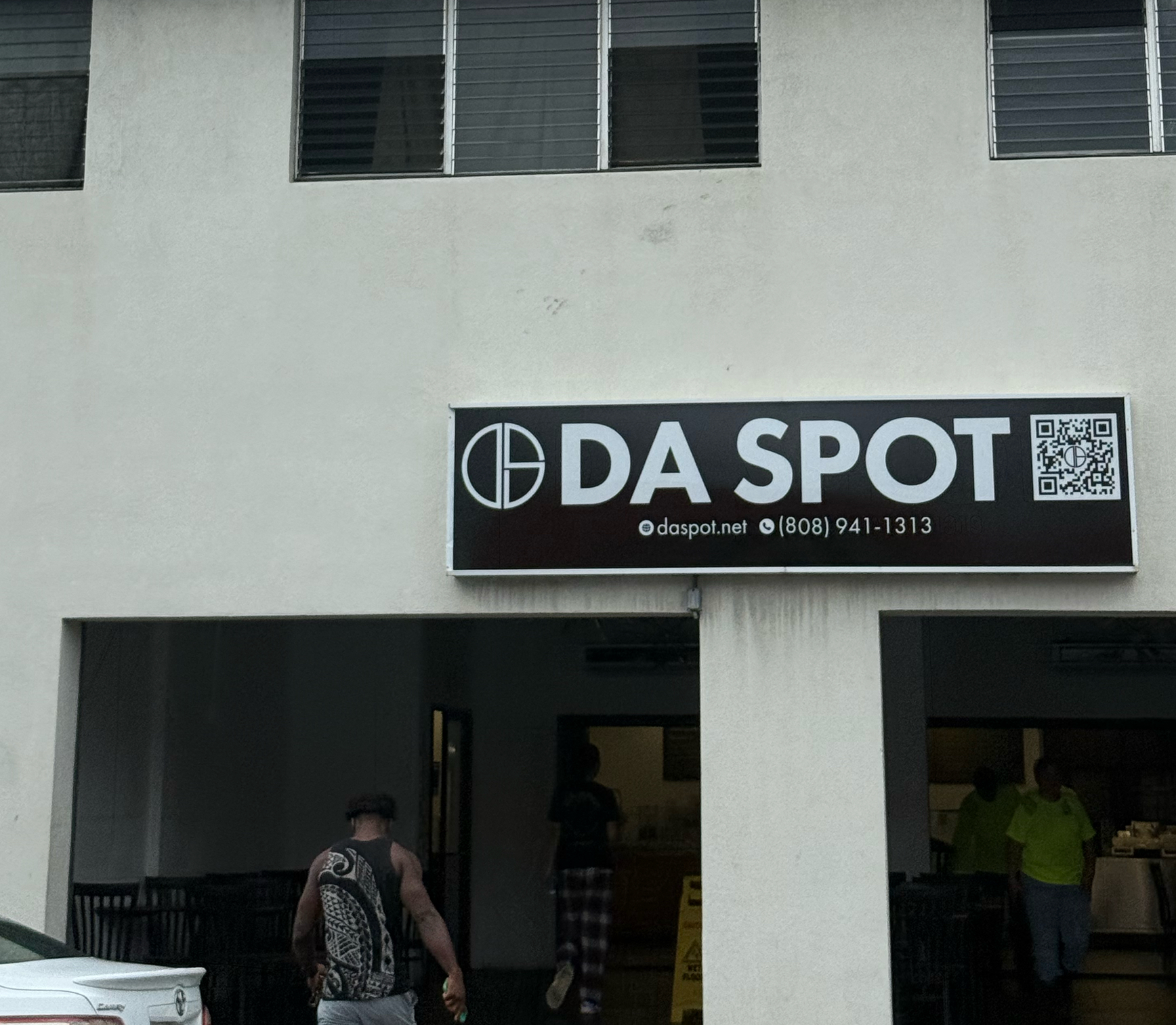
|
149433
|
Grace Rennie
|
United States
Honolulu
|
|
|
English, but the name “Da Spot” reflects pidgin influence.
|
Multilingual Hawaiʻi
|
|
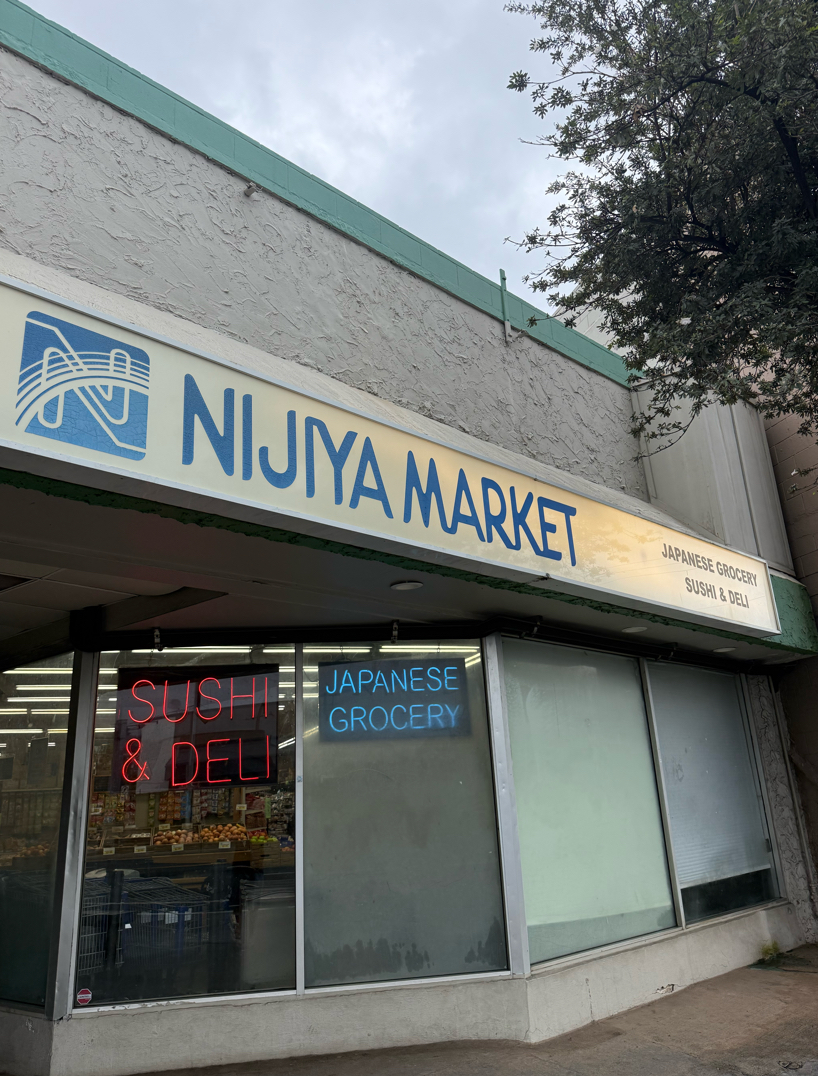
|
149434
|
Grace Rennie
|
United States
Honolulu
|
|
|
English and Japanese
|
Multilingual Hawaiʻi
|
|
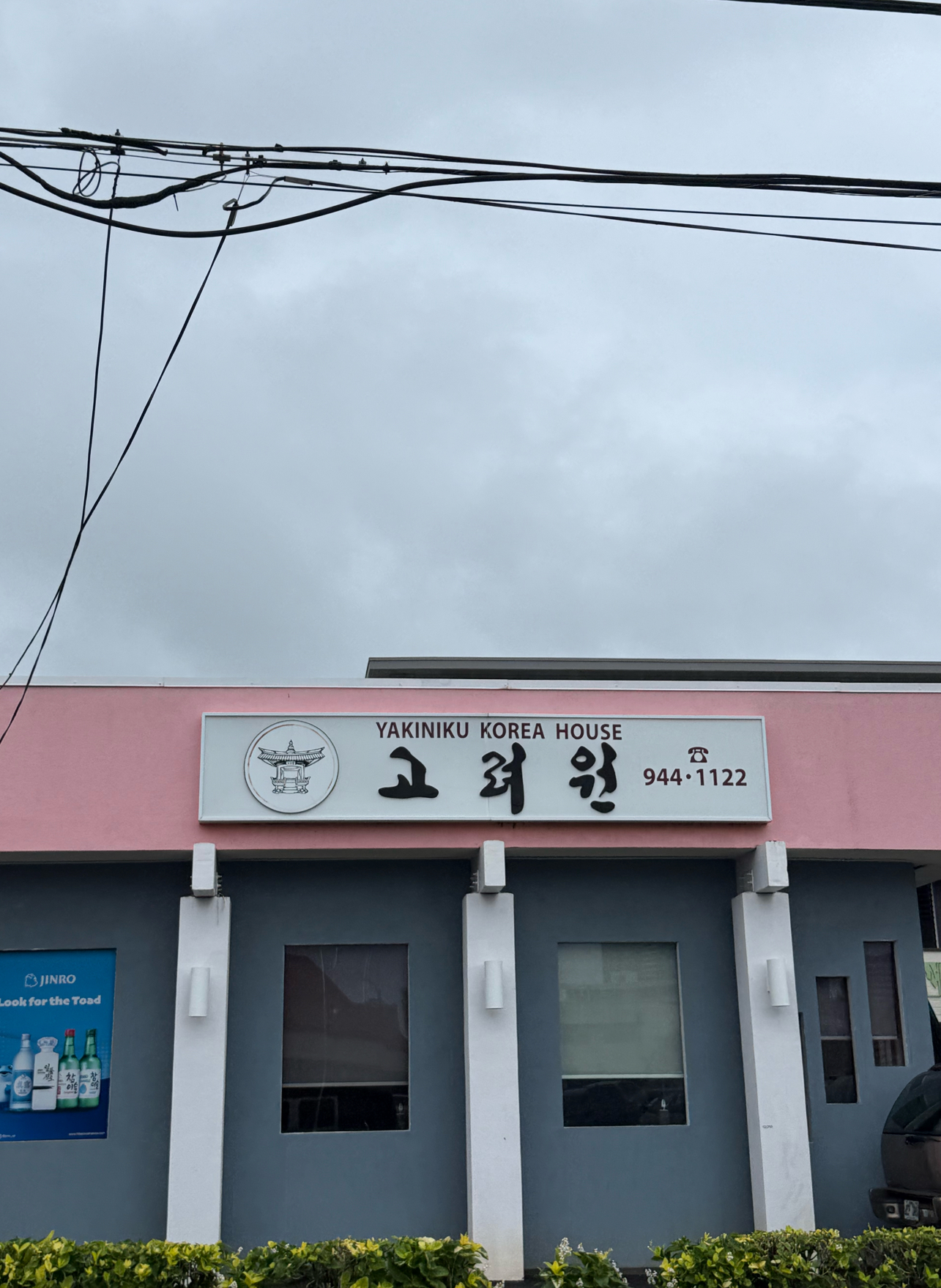
|
149435
|
Grace Rennie
|
United States
Honolulu
|
|
|
English and Korean
|
Multilingual Hawaiʻi
|
|
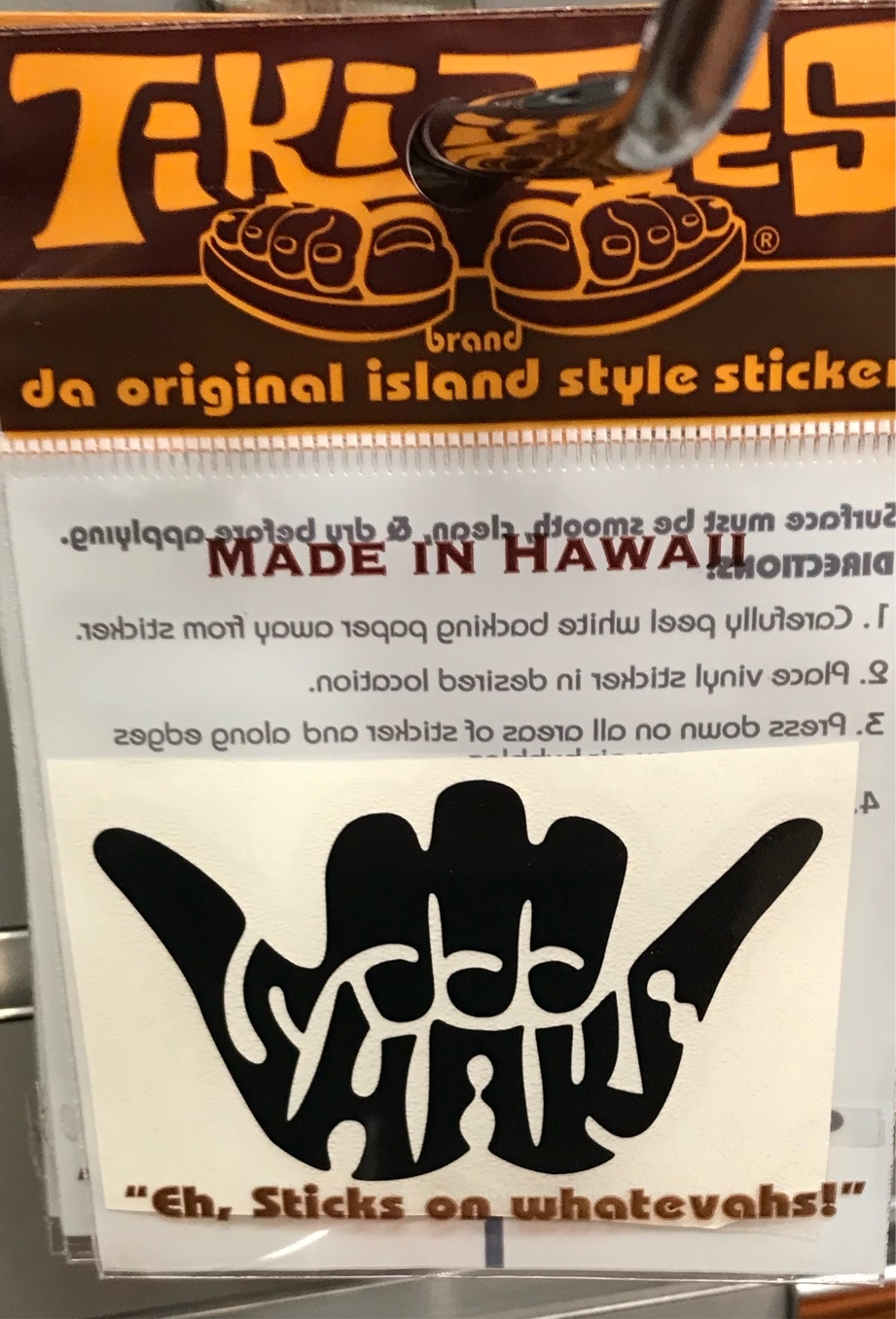
|
25787
|
|
United States
Honolulu
|
|
|
“EH, sticks on whatevahs” means “it sticks on whatever (anything)”. It sounds authentic but is more aimed at tourists, so it is synthetic.
|
Multilingual Hawaiʻi
|
|
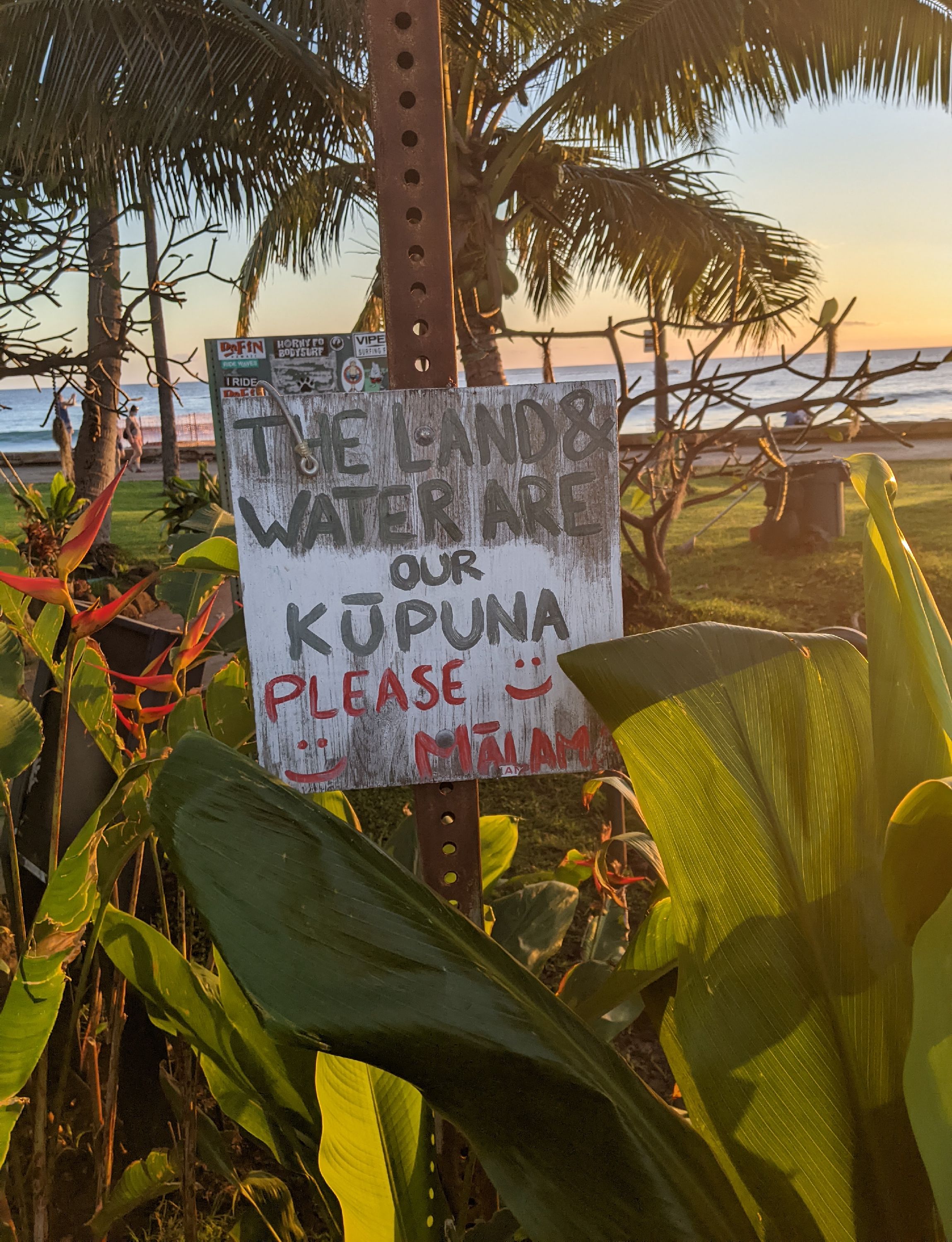
|
47807
|
|
United States
Honolulu
|
|
|
—
|
Multilingual Hawaiʻi
|
|